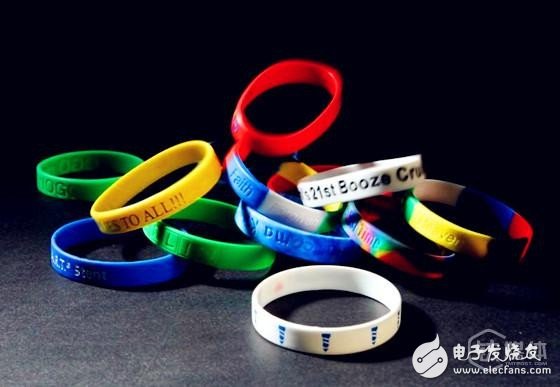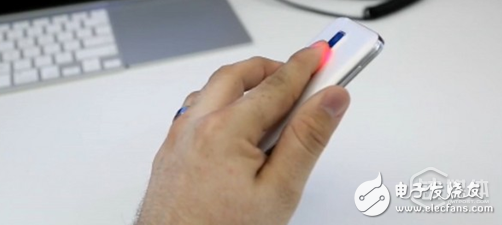Why is the wearable device heart rate monitoring function rarely qualified?
Nike smart bracelets have been settled in the case of inaccurate motion monitoring, but this does not seem to close the distance between the good expectations of wearables and the reality of bones. Even some consumers choose to “give up†after purchasing for a week or two, expressing dissatisfaction with some wearable devices in an extreme way. When we are worried about the industry, we have to accept the objective reality that there are currently few wearable devices that are truly qualified products. Of course, we should also look more calmly at the existing product technology level and report rational optimism about the development of the industry. I believe that the difficulty of starting does not affect its status as an IoT carrier. Whose heart rate monitoring is accurate? Looking at the entire field of wearable devices, we can see that almost every wearable device is equipped with functions for recording various data related to the human body, such as sleep, heart rate, exercise volume, etc. It seems that if this function is missing, it cannot be Be honest with the title of "wearable device." Moreover, it is also a feature that currently supports most wearable devices in the market. Of course, this is understandable, because wearable devices without data have no value. So the question is, with data wearable devices, are their data accurate? Do consumers believe that their data is accurate? Let's look at a set of experiments first. Taking the smart device with heart rate monitoring function on the market as an example, Shanet Profis of CNET selected Garmin VivoFit, Basis Carbon Steel, Withings Pulse O2 with the help of cardiologist Dr. Jon Zaroff. The Samsung Gear Fit and Samsung's Galaxy S5 with fingertip sensors were tested as three stationary and three motion tests. The results show that under static conditions, the data of the five wearable devices are relatively accurate, and the error rate is controlled at about 10%. However, in the motion state, except for the Garmin VivoFit and Galaxy S5, the other devices have appeared. A large degree of error. Errors in heart rate monitoring of five smart bracelets How did the measurement result come about? This has to start with the principles of wearable devices and specialized medical devices: ECG machines or chest-belt heart rate monitors used in professional medical environments use electrode-type heart rate sensors, which are often complicated and bulky to operate. On smaller wearable devices. At present, most of the sensors carried on the mobile device side are photoelectric heart rate sensors measured by light reflection, that is, the LEDs are illuminated by LEDs to monitor the blood flow velocity to obtain BPM (heartbeats per minute). If you want to obtain more accurate monitoring data, the photoelectric heart rate sensor often has a very high requirement for the actual monitoring environment, that is, the user can't talk, can't move, and can't sweat. Therefore, in the sports environment, the error probability will be relatively large. The Garmin VivoFit and Galaxy S5 maintain relatively accurate data records during exercise. The former is because it is a chest strap heart rate sensor. The technical principle is similar to that of an ECG machine, although the latter is in principle identical to the bracelet, but different. It is the position measured by the mobile phone at the fingertip. Since there is an arterial blood vessel at the fingertip of the index finger, it can basically maintain the same frequency as the heart. Photoelectric heart rate sensor on Samsung S5 mobile phone We can conclude from this experiment that if you want to get accurate heart rate data in the state of exercise, the wearing position of the wearable device is very important, that is, either near the heart or near the fingertips, anyway, it can't be The wrist is the right place, so this will negate the accuracy of heart rate monitoring for all current smart bracelets and watch products. Of course, some domestic manufacturers of medical device products have a deeper understanding of this technology. For example, the wearable device of Li'an Health Butler, produced by Beijing Li'an Shenghua Technology Co., Ltd., uses the monitoring technology of fingertip arteries. Achieve monitoring of heart rate. So what about sleep monitoring? In addition to heart rate monitoring, there is another technology that is of concern to everyone, that is, monitoring of sleep. For example, the Jawbone UP bracelet, which can be used to monitor users' deep sleep time, is also denied by the relevant medical experts. In the function of monitoring the user's deep sleep time, the implementation principle of Jawbone UP is to track the user's small movement during sleep time through the activity monitor to judge the sleep state. Another monitoring of sleep is achieved by reference to heart rate. Since our heart rate changes with the change of sleep cycle, when we are in deep sleep, the heart rate will decrease accordingly, so we refer to this sleep time. Heart rate changes to monitor sleep quality. However, the actual situation is that the judgment of sleep depth is based on the performance and characteristics of EEG, EMG and EEG during sleep. Obviously, the monitoring method of Jawbone UP bracelet is not scientific, and its The data is also not reliable. In addition, according to the monitoring of heart rate, since the accuracy of the heart rate sensor on the wearable device is low, the credibility of the heart rate sensor is still to be considered. At this time, if the sleep cycle data based on the heart rate reference can only be used, we can only As long as you don't sleep, you can sleep until dawn, and don't care too much about the so-called monitoring results. Writing here, we can answer the question at the beginning, that is, whose monitoring data is accurate? Professional-grade medical equipment is relatively accurate, or the equipment used in a specific environment for professional athlete training is accurate, but in any case, it cannot be said that the data on the wearable devices that are not medically certified are accurate, or It is close to the real world, especially smart watches and smart bracelets. In fact, we can see from the advertisements of various wearable devices that companies try to avoid the problem of accurate data. For them, they must take this as a gimmick to attract consumers, but they must grasp It’s just right, there is no room for manoeuvre. For example, FuelBand told consumers in the promotion that the device can measure four kinds of data: time, calories, steps and NikeFuel energy count, but did not say that the data is absolutely accurate, because "accurate" is originally a Relative concept, even professional-grade medical equipment will still have some errors. To put it another way, these data are not completely useless. If you like, they can still be used as a reference. You can roughly judge a trend based on these data, increase your understanding of yourself, and try to make yourself more scientifically adjust yourself. Life and so on. How to face monitoring "not allowed" Compared with the current medical-grade monitoring products, smart watches and bracelets that are more miniaturized in product form have more or less gaps. Currently, there are also some smart watches that focus on medical-grade monitoring. No less than medical grade monitoring products. However, as far as current medical-grade monitoring products are concerned, the “accuracy†of monitoring is only a relative concept, and it cannot completely reflect the true physiological state of the human body. Similarly, for wearable devices, with the lapse of time, the industry chain technology continues to improve, the algorithm technology experience is revised and accumulated, whether it is based on watches, bracelets, clothes and other forms of wearable devices, monitoring data Will continue to be close to the true physiological state of the human body. For enterprises, we need to objectively face the stage of the current industrial development process, monitor our core from the perspective of users, and pass mature technology to consumers through marketing. For some technologies in the process of development, perhaps we need to adopt a "conservative" approach, in the form of an additional function, in the process of marketing and publicity, clearly tell consumers that the function can only be used as a reference. For consumers, we need to be more tolerant of new technology, especially the disruptive product technology of wearable devices, which needs to be built from 0 to 1 and evolved from 1 to N. A certain time. We are looking at wearable devices from the perspective of mature electronic devices today. There may be various imperfections, but if we look at the trend of the entire Internet of Things era, the current wearables are on the cusp of the times. It is evolving at a speed beyond the development of PCs and smartphones. Regardless of the controversy, for wearable devices, it will grow from babies to adolescents and mature, and advances in technology will ultimately benefit humanity. Aluminium Parts For 3C Electronics Aluminium Parts For 3C Electronics,Aluminium For Computer,Aluminum For Speaker,Aluminum Speaker Box KAM KIU ALUMINIUM GROUP , https://www.kamkiualuminium.com

